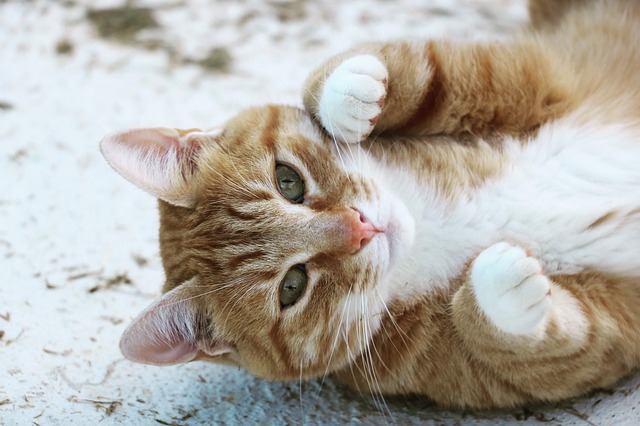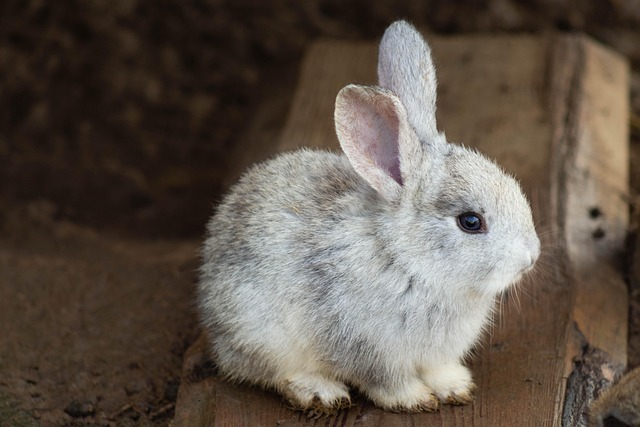What is the meatloaf position in a sick cat?
What is the meatloaf position in a sick cat?
The "meatloaf position" in a sick cat refers to a curled-up posture where the cat tucks its paws underneath its body, resembling the shape of a meatloaf. This position may indicate discomfort or illness, and observing changes in your cat's behavior is crucial for prompt veterinary attention and care.
What is the meatloaf position in a sick cat?
Decoding the Cat's Language: Understanding the Meatloaf Position in Ailing Felines
H2: The Intricate World of Feline Communication Through Body Language
Cats communicate a plethora of emotions and physical states through their body language, and the "meatloaf position" is one such telltale sign that warrants careful observation. Delving into the significance of this posture can provide insights into a cat's well-being.
H3: Defining the Meatloaf Position: A Curled-Up Cat Mystery Unveiled
The meatloaf position involves a cat curling up into a compact shape, reminiscent of the dish it's named after. Paws are tucked underneath the body, and the cat appears to minimize its body exposure. This posture is often observed in various situations, including instances of illness or discomfort.
H4: Unraveling the Meaning: Why Cats ***ume the Meatloaf Position
Understanding the reasons behind a cat adopting the meatloaf position requires a closer look at feline behavior. Cats instinctively try to make themselves less vulnerable when they feel unwell, and ***uming a compact position can provide a sense of security. This may be particularly evident in sick or injured cats, signifying their need for rest and self-protection.
H3: Recognizing the Signs: When the Meatloaf Position Raises Concerns
While the meatloaf position itself is not inherently problematic, consistent adoption of this posture, especially in conjunction with other signs such as lethargy, changes in appetite, or abnormal behavior, may indicate an underlying health issue. Cats are masters at masking pain, so paying attention to subtle changes in their body language becomes crucial for early detection of potential illnesses.
H4: Veterinary Insight: Seeking Professional Guidance for Ailing Cats
Upon noticing concerning changes in a cat's behavior, consulting with a veterinarian is paramount. A professional examination can help identify the root cause of the cat's discomfort and guide appropriate treatment. The meatloaf position, when coupled with other symptoms, may provide valuable clues for veterinarians to ***ess the cat's overall health.
H2: Supporting Ailing Cats: Providing Comfort and Care
For cat owners, offering comfort and care to a cat ***uming the meatloaf position involves creating a quiet and safe environment. Providing a warm and cozy space, ensuring access to food and water, and scheduling a vet visit for a thorough check-up are essential steps in supporting ailing felines.
H3: Preventive Measures: Fostering a Healthy Environment for Cats
While the meatloaf position can be an indicator of illness, fostering a healthy environment for cats can contribute to preventive care. Regular veterinary check-ups, a balanced diet, and a stress-free living space can mitigate the risk of illnesses and support a cat's overall well-being.
H4: Conclusion: Cracking the Code of Feline Behavior
In conclusion, understanding the meatloaf position in a sick cat is an essential aspect of deciphering feline communication. By recognizing the signs, seeking professional guidance when needed, and providing a supportive environment, cat owners can ensure the well-being of their feline companions, contributing to a harmonious and healthy relationship.
for anwser for this question What is the meatloaf position in a sick cat? you need to know too
Q1: Why do cats adopt the meatloaf position?
A1: Cats often ***ume the meatloaf position, curling up with tucked paws, as a means of self-protection and comfort. It can be a response to feeling unwell or vulnerable.
Q2: Is the meatloaf position only seen in sick cats?
A2: While it can be a sign of illness or discomfort, the meatloaf position is not exclusive to sick cats. Some cats adopt this posture as a way to rest or relax.
Q3: What should I do if my cat frequently stays in the meatloaf position?
A3: If your cat consistently stays in the meatloaf position, especially accompanied by other concerning symptoms, it's advisable to consult with a veterinarian for a thorough examination and appropriate guidance.
Q4: Can the meatloaf position be a sign of stress in cats?
A4: Yes, cats may ***ume the meatloaf position when stressed or anxious. Observing the context and other behavioral cues can help determine the cause.
Q5: Are certain breeds more prone to using the meatloaf position?
A5: The meatloaf position is a behavior observed across various cat breeds. It is more ***ociated with individual cat temperament and cir***stances rather than specific breeds.
Q6: Does the meatloaf position indicate pain in cats?
A6: While cats are adept at hiding pain, a consistent adoption of the meatloaf position, especially if accompanied by signs of discomfort, may indicate pain. Veterinary evaluation is recommended.
Q7: Can providing a cozy environment alleviate a cat's preference for the meatloaf position?
A7: Creating a warm, comfortable environment can contribute to a cat's overall well-being but may not necessarily change its preference for the meatloaf position. Veterinary advice is essential for a thorough ***essment.
Q8: Should I be concerned if my cat rarely ***umes the meatloaf position?
A8: Not necessarily. Cats have diverse resting positions, and the infrequent use of the meatloaf position alone is not a cause for concern. Consistent changes in behavior warrant attention.
Q9: Can kittens also exhibit the meatloaf position?
A9: Yes, kittens can also adopt the meatloaf position. It's a common behavior seen in cats of various ages and is not exclusive to adults.
Q10: Are there specific signs that accompany the meatloaf position, indicating a cat is unwell?
A10: Signs such as lethargy, changes in appetite, and abnormal behavior, when observed alongside the meatloaf position, may indicate an underlying health issue. Veterinary consultation is recommended for a comprehensive ***essment.














Leave a comment